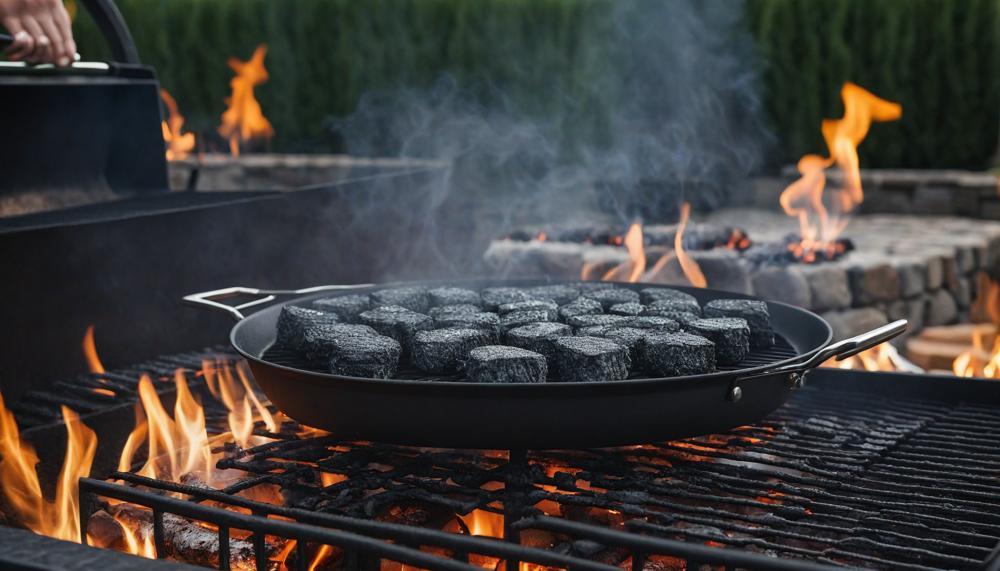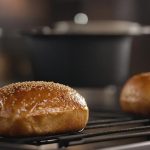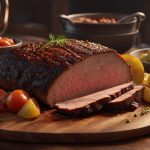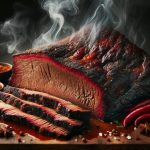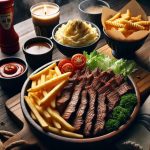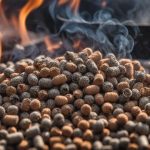Absolutely, you can add charcoal while grilling, and in many cases, it’s necessary to ensure your barbecue remains hot enough to cook your food perfectly. Whether you’re slow-cooking ribs or hosting a backyard BBQ that lasts for hours, maintaining the right temperature is crucial.
Adding charcoal during grilling is not just about keeping the fire going; it involves a few key strategies to ensure safety and optimal cooking results. Here are the critical points you need to consider:
- Safety First: Always prioritize safety by using a chimney starter to ignite new charcoal. Ensure that each piece of charcoal is covered in white-gray ash before adding it to the grill. This step is vital for avoiding any hazardous flare-ups.
- Temperature Control: Adding charcoal helps maintain a consistent temperature. Weather conditions like wind or cold can cool down your grill faster, making additional charcoal essential for even and effective cooking.
- Handling Techniques: Utilize heat-resistant gloves and long-handled tongs when adding charcoal. This practice keeps you safe from burns and ensures that you can manage the grill confidently and efficiently.
By focusing on these aspects, you’ll keep your grill at the ideal temperature while also upholding the highest safety standards. Let’s dive deeper into the techniques and tips that will make your grilling sessions a resounding success.
Contents
Why and When to Add More Charcoal
It’s vital to understand when and why to add more charcoal while grilling to maintain optimal cooking conditions and enhance flavour. Adding charcoal replenishes heat levels, crucial for even cooking and achieving that perfect sear on meats. Additionally, it intensifies smoky flavours, essential for barbecue enthusiasts seeking robust taste profiles.
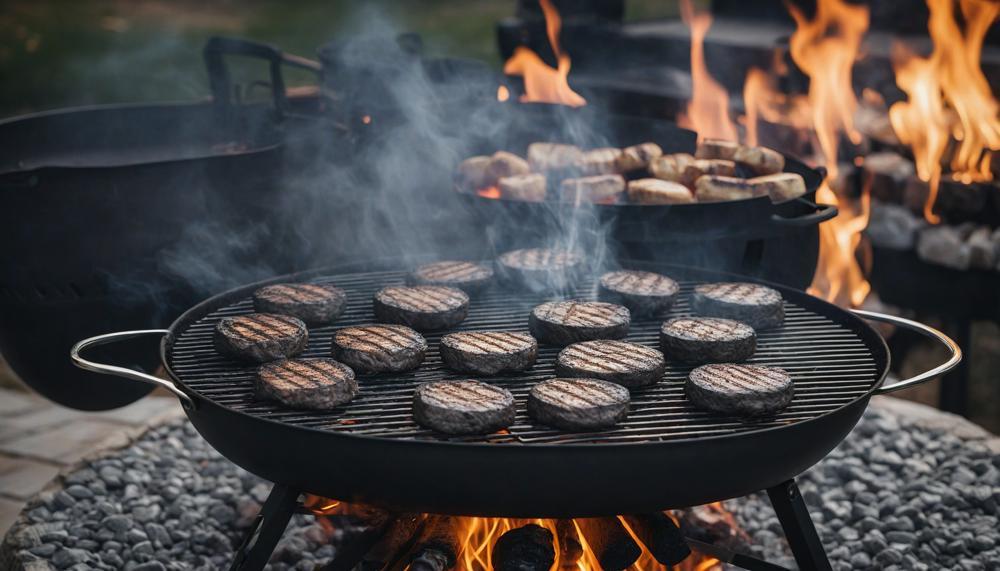
| Importance | Reasons | Details |
| 1 | Enhanced Heat | More charcoal equals more heat, ensuring balanced temperatures across the grill. |
| 2 | Flavour Intensity | Additional charcoal enriches smoky flavours, ideal for grilling enthusiasts. |
| 3 | Optimal Searing | Revitalise fading flames for perfect searing. |
For best results, preheat the grill and distribute charcoal evenly, using tongs to add charcoal slowly. Replenish every 30 minutes during extended cooking sessions, ensuring consistent temperature and flavour. Always wait for coals to turn ash-white before adding to the grill for safety and efficiency.
How to Safely Add Charcoal to the Grill
Adding charcoal to the grill during cooking is a necessary task to maintain a consistent temperature for long grilling sessions. Here are the essential steps to do it safely:
- Light the Charcoal: Use a chimney starter to ignite new charcoal. Avoid using lighter fluid on hot coals as it can cause dangerous flare-ups. A chimney starter ensures the charcoal lights evenly and safely.
- Wait for the Charcoal to Heat Up: Allow the charcoal in the chimney starter to burn until it is covered with a white-gray ash. This indicates the charcoal is ready for grilling and will help prevent any harsh chemical taste from lighter fluid.
- Prepare for Addition: Before adding the new charcoal, put on heat-resistant grill gloves to protect your hands from high temperatures. Ensure you have long-handled tongs ready to handle the hot coals safely.
- Add the Charcoal: Using the tongs, carefully add the new, ash-covered coals to your grill. Spread them evenly to maintain a consistent heat across the grill surface.
- Let the Charcoal Ignite: Close the lid of the grill to create a hotter environment that helps the new coals ignite. Make sure the vents are open to allow proper airflow. Monitor the grill temperature closely to avoid overheating.
Other Tips for Managing Heat During Charcoal Grilling
Here are some additional tips for managing heat during charcoal grilling:
| Tip | Description | Details |
| Manage Airflow | Adjust vents to control oxygen intake and regulate temperature. | Open vents to increase heat; close them to decrease heat. This simple adjustment affects airflow, which in turn impacts how hot your coals burn. |
| Use Aluminum Foil | Create heat shields or wrap foods to control cooking speed. | Aluminum foil can be fashioned into heat shields to protect food from direct heat. It’s also useful for wrapping foods like potatoes to ensure even cooking without burning. |
| Employ Dampers | Install dampers on your grill to manage airflow more precisely. | These devices allow for fine-tuned control over air circulation, helping you maintain consistent temperatures throughout your grilling session. |
| Arrange Coals Wisely | Position coals strategically for different cooking needs. | Concentrate coals for high-heat searing or spread them out for lower-temperature cooking. This flexibility caters to various recipes and cooking techniques. |
| Consider Wind Protection | Shield your grill from wind to stabilize heat levels. | Wind can accelerate charcoal burn or cool down the grill unexpectedly. Position your grill in a sheltered spot or use a wind guard to mitigate its effects. |
| Preheat Grate and Lid | Warm up the grill components before cooking. | Heating the grate and lid ensures they are hot and ready when you start grilling, promoting even cooking and preventing food from sticking. |
These tips enhance your control over charcoal grilling heat, ensuring your dishes cook to perfection without unexpected temperature fluctuations.
More Charcoal Resouces
The rich world of grilling offers a variety of alternative charcoal sources that cater to different tastes and grilling styles compared to traditional charcoal. Here’s a breakdown of some notable alternatives:
| Charcoal Type | Flavor | Performance |
| Lump Charcoal | Offers a natural, smoky flavour with hints of the original wood. | Burns hot and fast, ideal for quick searing and intense heat. |
| Thai Charcoal | Imparts a mild, fruity aroma to grilled food. | Produces consistent heat, suitable for long grilling sessions. |
| Coconut Charcoal | Provides a clean, mild coconut taste. | Burns cleaner and hotter than regular wood charcoal. |
| Binchotan | Delivers a subtle, clean flavour with no smoke. | Highly efficient, burns at high temperatures for extended periods. |
These alternatives offer distinct flavours and performance advantages:
- Flavour: Each type of charcoal brings its unique flavour profile to grilled dishes, enhancing the taste with nuances of the wood used or additives like coconut husks.
- Performance: Alternative charcoals generally burn hotter and cleaner than traditional wood charcoal, making them efficient choices for different grilling needs. Lump charcoal, for instance, excels in intense heat for searing, while Binchotan provides sustained high temperatures ideal for slow cooking.
In summary, exploring alternative charcoal sources such as lump, Thai, coconut, or Binchotan expands the palette of flavours and enhances grilling performance beyond traditional options.

